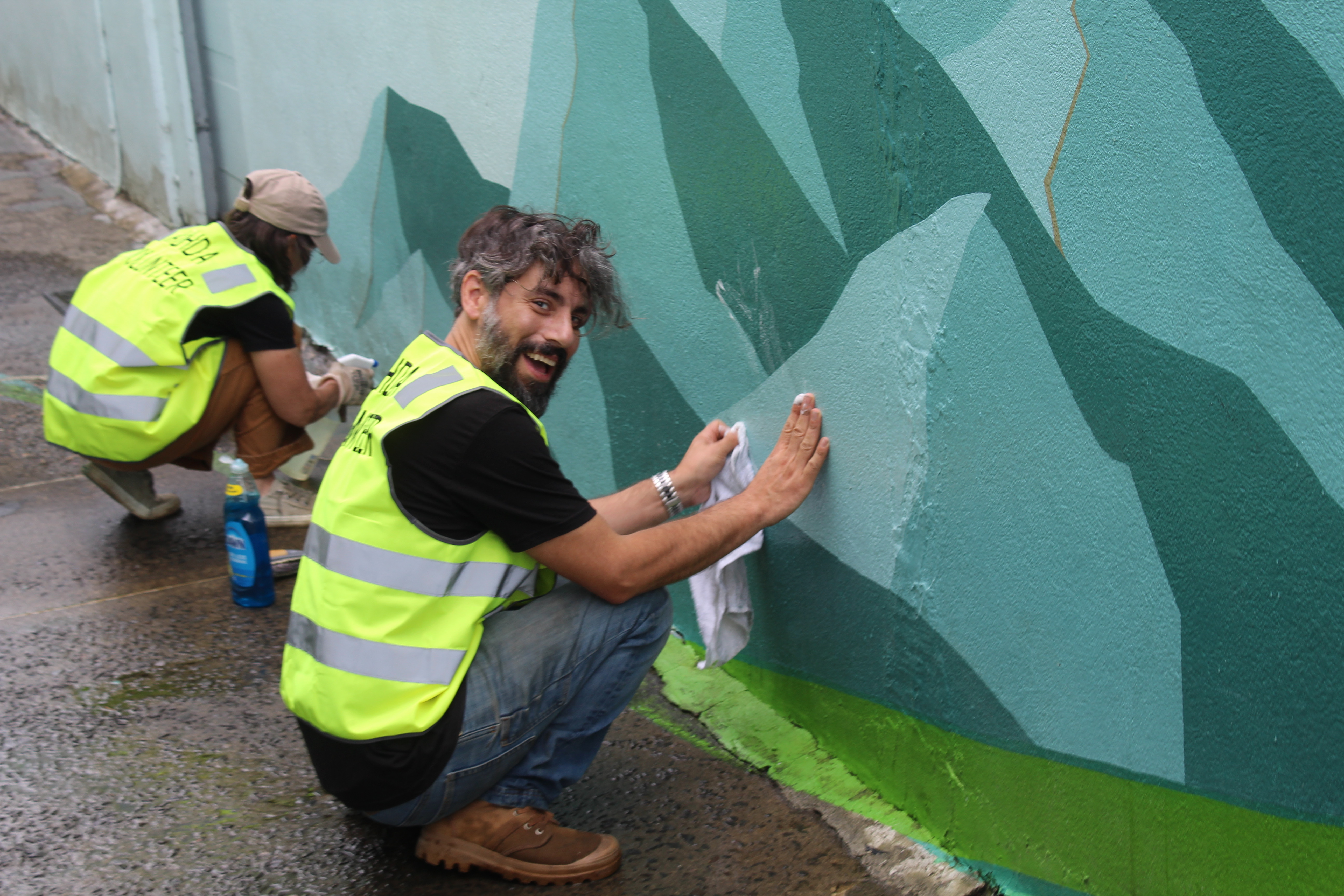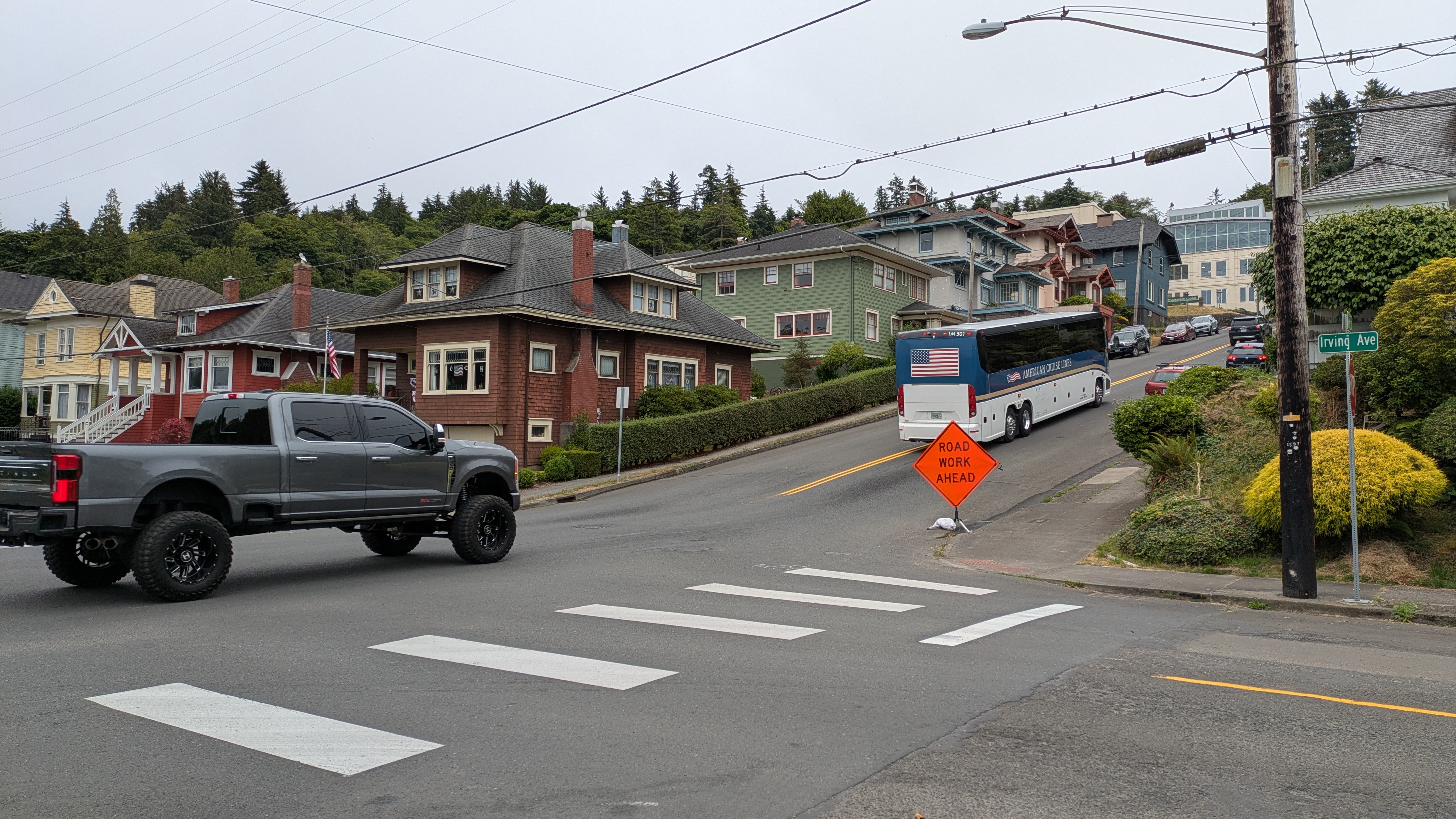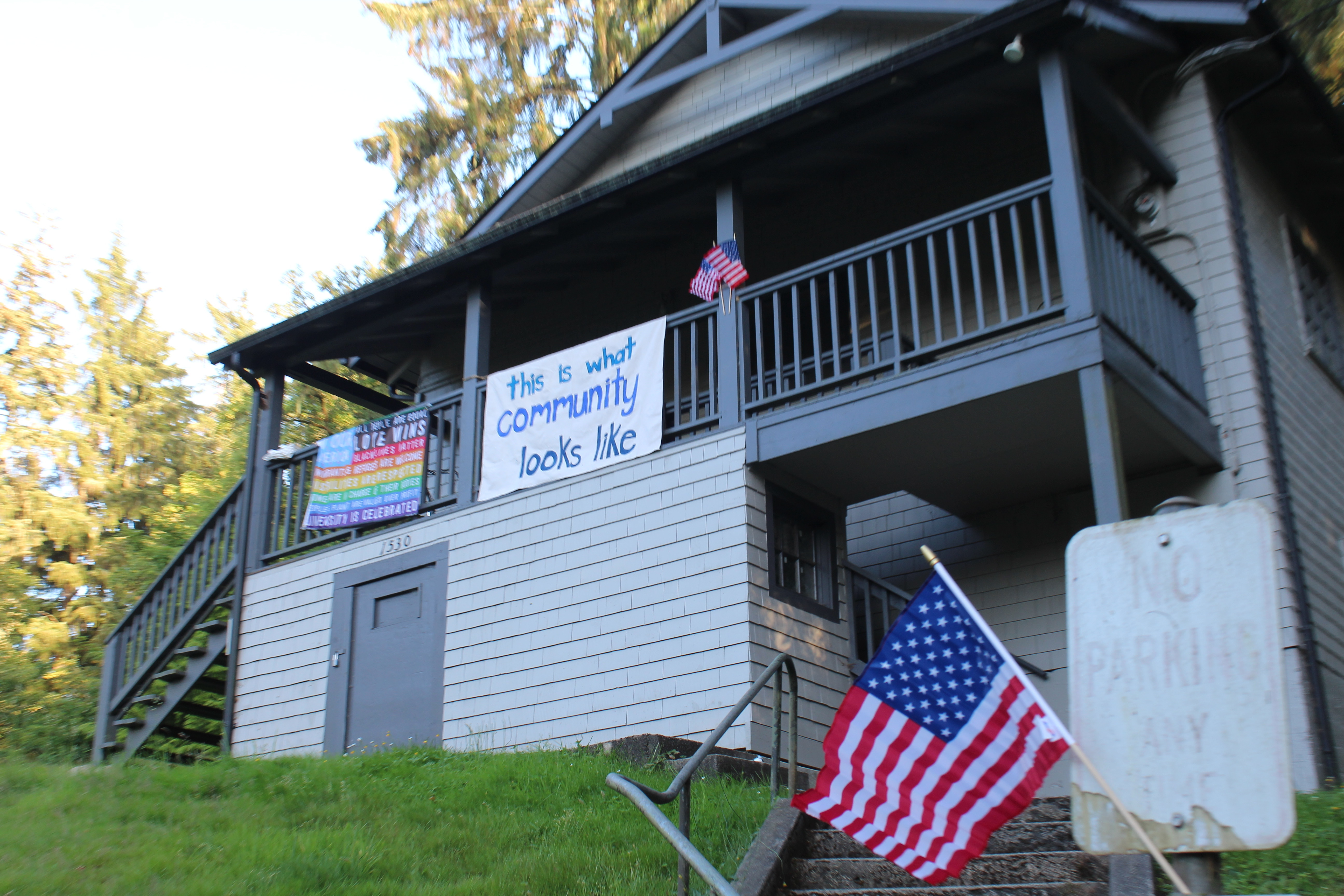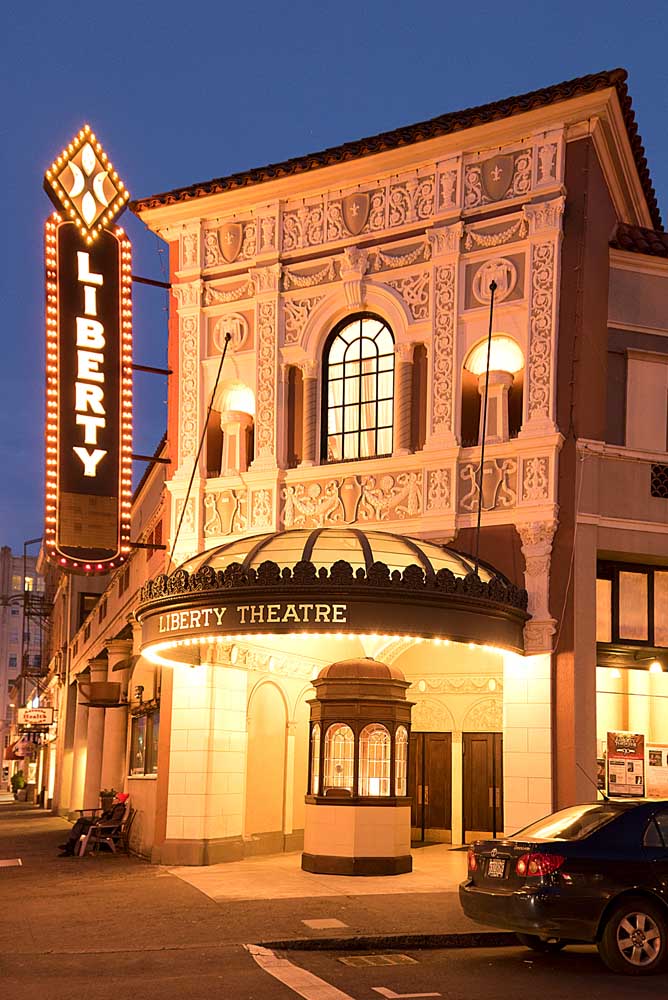Clatsop Coin to close up shop
Published 9:00 am Wednesday, July 23, 2025
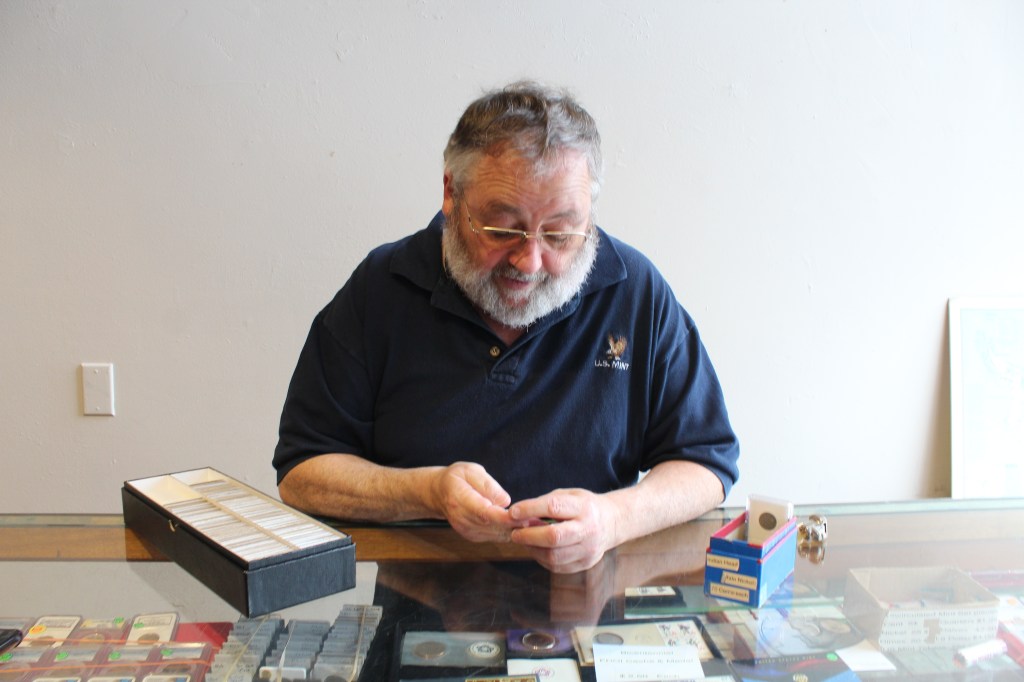
- Scott McClaine holds some coins at Clatsop Coin in Astoria. Mathias Lehman-Winters/The Astorian
Scott McClaine’s coin store set to close Sept. 3
Twenty years ago, Scott McClaine sat on his U.S. Coast Guard ship reading The Daily Astorian, which he had mailed to the ship whenever it was docked in port in Astoria.
Trending
McClaine saw something in the paper that would change his life — an ad looking for tips on a coin-collection theft that happened in Seaside. As McClaine described it, that ad sparked a bug in him, a fascination with coins.
Soon after, McClaine retired from the Coast Guard after 28 years and began collecting coins himself. He then spent a couple of years peddling his coin collection to antique malls. However, by 2008, McClaine had decided it was time to anchor his business with a brick-and-mortar location.
“I just started praying about it and was led to open up my own storefront,” McClaine said. “Because at the antique malls you have to give them a certain amount of guaranteed rent, plus the commission, plus the mileage to get to it.”
By the time he had worked out his monthly gas and commission bills, McClaine thought he might as well be spending that money on rent.
McClaine’s first coin-dealer store was on the corner of 10th and Commercial streets in Astoria. “I made the leap, went into a brick-and-mortar store with my own collection and was over there for like four years,” he said.
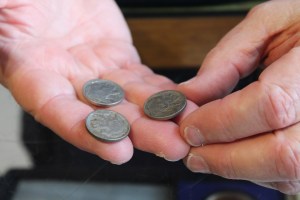
Scott McClaine holds a 1998 penny worth $350 due to a rare production error.
Mathias Lehman-Winters/The Astorian
By 2011, he had to leave that location because the building was being remodeled.
Trending
At the time, McClaine said, he did not know what he was going to do — but having to close the store was a blessing in disguise.
“The following summer my dad took a turn for the worst over in Yakima,” said McClaine. “He needed me to come over for a week, and then my other brother came over for a week, and then I’d be over again.”
McClaine said one week when he was taking care of his dad, he realized he was glad that he had to close up shop because he didn’t have to worry about missing customers.
“We played the dance for several months, and dad eventually died.”
In 2020, McClaine reopened, first in a unit adjacent to his current location, and then moved over to where his shop is today, on 12th Street and Marine Drive.
Coin op
After almost 20 years in the coin business, McClaine has seen all kinds of coins come through his shop. He has personal favorites.
“I’ve thoroughly enjoyed a certain issue of coin,” he said, “the early commemorative half dollars, from 1892 to 1953.”
He was mostly interested in the history of the coins, especially those minted in 1892.
The 1892 half dollar was released for the 1893 World’s Columbian Exposition in Chicago, to celebrate the 400th anniversary of Christoper Columbus’s arrival in the Americas.
What’s the oldest coin he’s seen? McClaine has had coins pass through his shop that date as far back as the late 1700s, he said.
McClaine has collected a number of valuable coins, some that are valued at more than $1,000. In the display case at Clatsop Coin sits one penny from 1998, listed at $350. The coin’s value, McClaine said, came from the fact that it was a proof coin.
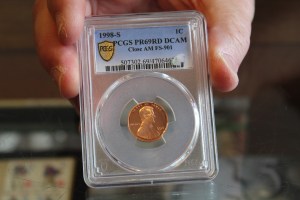
Scott McClaine examines some coins at his shop in Astoria. He’s closing the store.
As he described it, “the difference between a proof coin and a business strike coin is much like the difference between (a green) apple and a pear.”
Both have a flower on the bottom, green skin, white meat, seeds and a stem on top, yet they are fundamentally different, he said.
“A proof coin starts with a very highly polished planchet (metal coin disk). It’s pressed, and then a little bit of pressure is released and then pressed a second time to get great metal flow,” McClaine said. “A business strike coin is just mass production.”
In the case of the penny, a business strike was used for the tail side of the coin, and a proof strike on the head of the coin, creating an imperfection that skyrocketed the value of the coin because of the rarity of its production process.
On more than one occasion, McClaine has seen people come into his shop thinking they have a quarter with a valuable typo on it. Specifically, they believe the phrase “In God We Trust” is incorrectly represented as: “In Cod We Trust.”
McClaine said they are wrong. In reality, the word “God” looking like “Cod” is due to wear or intentional post-mint alterations. Rather than being rare and valuable coins, they’re worth exactly 25 cents, McClaine said.
End of an era
In his years of operation, McClaine said he has drawn customers from across Clatsop and the neighboring counties — even from as far east as the Bonneville Dam. However, now he says it’s time to close up shop for good. For one thing, he’s got years of memories to unpack.
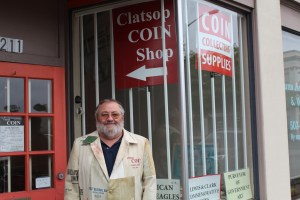
Scott McClaine wears his coat made of bank bags in front of Clatsop Coin.
Mathias Lehman-Winters/The Astorian
“You gotta be able to look at the big picture,” said McClaine. “I am 68. I’ve got a basement full of boxes from when I retired from the Coast Guard. I need to unpack them and process them. … If it wasn’t for a sense of me just wanting to close down for whatever is coming down the road, I wouldn’t be closing down.”
McClaine said that his shop will stop purchasing coins on July 31, but it won’t close until Sept. 3; he wants to stay open until the end of summer tourist season.
His post-coin-dealer plans? Travel.
McClaine and his wife have their sights set on going to Scotland and Ireland — and they’ll hopefully be in the stands when the Seattle Mariners win game four of the World Series.


